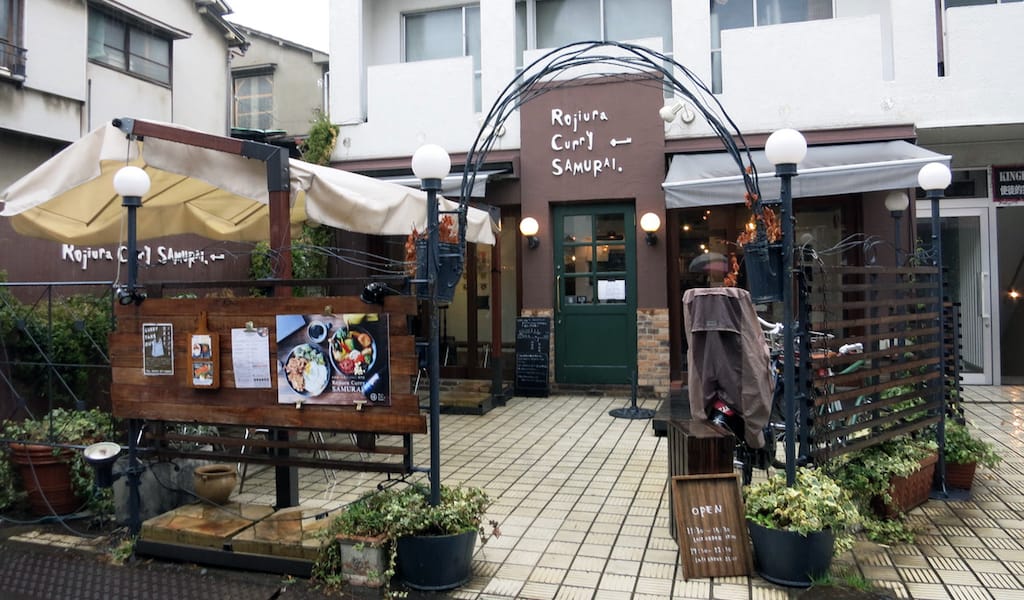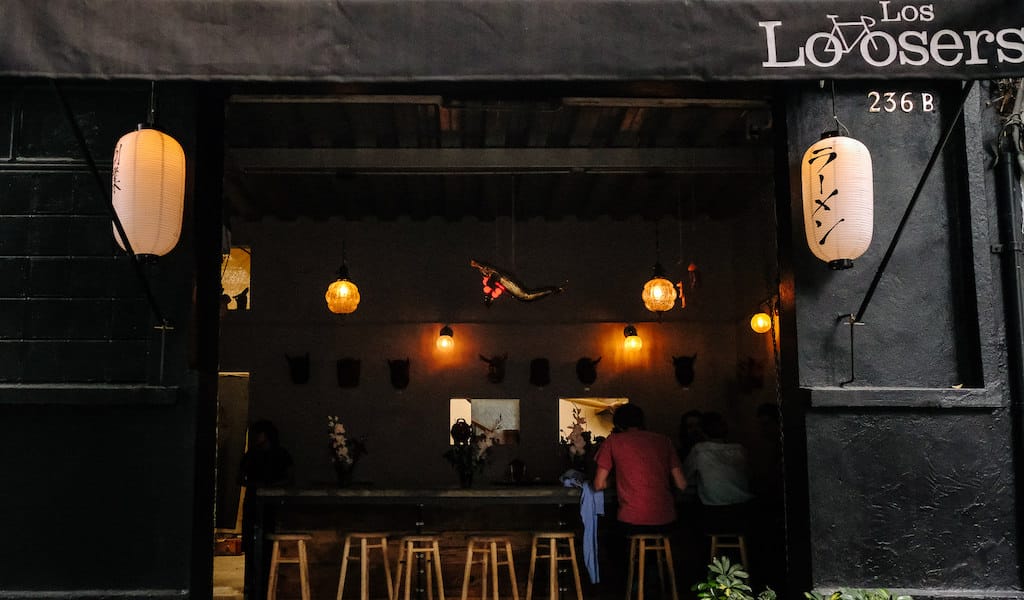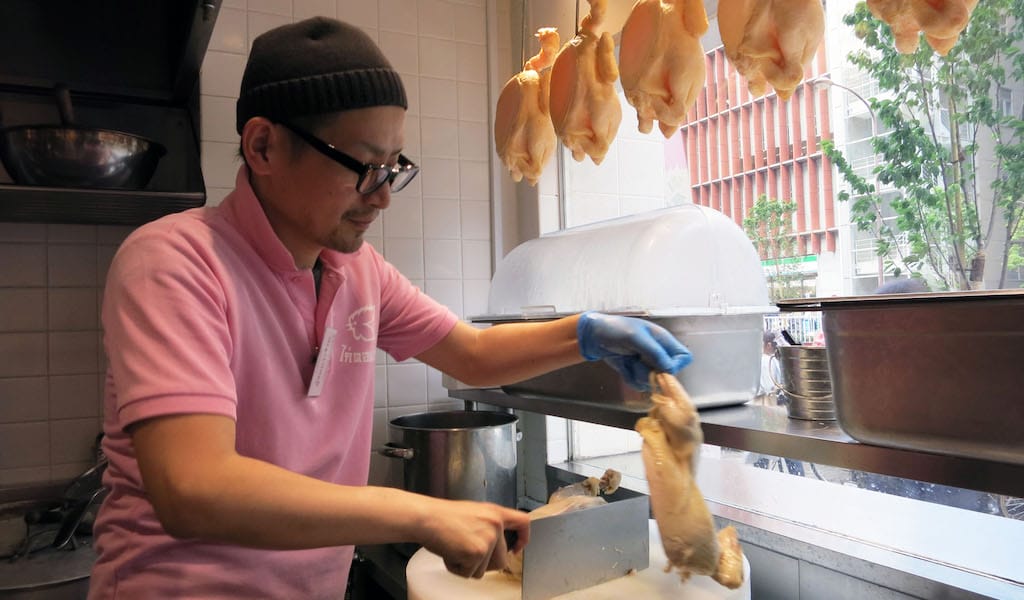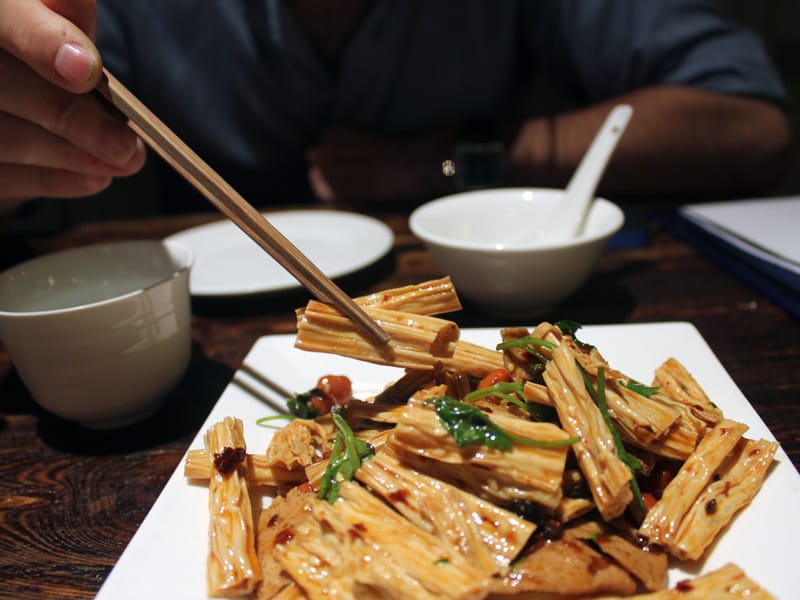The song “My Way” may be a staple of every karaoke bar in Japan but it’s also a fitting description for the Japanese fast food staple of “curry rice” as served at both Rojiura Curry Samurai and CoCo Ichibanya.
One can find four Tokyo outposts of Rojiura Curry Samurai, a Hokkaido curry maker from Sapporo, in Hachioji, Shimokitazawa, Kakurazaka and our favorite, Kichijoji. It seems these Japanese curry masters are fond of opening shops in cool neighborhoods where the locals will appreciate the uniqueness of this favored Japanese dish.
Much like ramen noodles, curry rice is adapted from a foreign cuisine as a form of fast food in Japan. In India, as elsewhere in Asia, curry dishes are focused on materials curried with spices. Japanese curry rice features a stew-like curry sauce containing a variety of ingredients atop a good helping of rice.
Curry first came to Japan during the Meiji era (1868-1912), brought by the British, who were at the time the colonial rulers of India. In the 1960s it became a staple of the Japanese food scene – some would even come to call curry, which is commonly served with rice or udon or sometimes even wrapped in dough, one of Japan’s national dishes.
In homes Japanese curry rice is usually not made from scratch, but rather from an instant curry roux purchased at the local supermarket or from vacuum-sealed pouches. Basic Japanese curry rice will have a small amount of protein such as pork or beef and perhaps an assortment of vegetables in the mix. But it is about bulking up on rice.
At Rojiura Curry Samurai the “my way” element begins with four kinds of base stock: a regular Japanese curry flavor, a milder version of Japanese curry, soy milk, or coconut milk. From there guests are asked to customize the spiciness with a whopping eleven levels of spice to choose from. The customizing eventually moves to sixteen different “toppings” or ingredients.

The focus at Rojiura Curry Samurai is on vegetables, which are sourced from a farmer in Hokkaido’s Sagetsu City. Each vegetable is treated separately and cooked perfectly: they pride themselves on things like steaming carrots for sweetness, boiling potatoes and frying them two times for crispness, boiling radishes for the perfect amount of softness, etc. After being prepared, these vegetables are cut into small pieces to allow for a maximum amount of veggie variety in the curry rice.
Our favorite is chicken with 20 vegetables, a rainbow of a dish with burdock, lotus root, carrots, broccoli, pumpkin and soybeans amongst the feast. It can be had without chicken for vegetarians, and we particularly love it when made with the coconut milk base.
We constantly hear complaints from vegetarians visiting Japan that they can’t find true vegetarian or vegan versions of the simplest Japanese foods. Order “vegetable curry rice” in most shops and you’ll receive a pork- or beef-based dish with vegetables in it.
So whenever a vegetarian is visiting, we encourage them to visit CoCo Ichibanya, one of Japan’s beloved fast food Japanese curry rice chains, to try their true vegetarian/vegan curry rice. Rest assured that this dish is no consolation prize – we often frequent the Roppongi branch specifically for it.
This chain, based in Aichi Prefecture, has been offering truly tasty curry rice at affordable prices for over 30 years. CoCo Ichi, as Japanese fans call it, has made a point of acknowledging that they are a favored destination of foreign visitors to Japan. Their menu is translated into many languages and has pictures of every dish. And they now offer a special curry that is truly vegetarian and also halal.
Because Japanese curry rice gets its distinct flavor from the pork or beef that’s been simmered in the roux, CoCo Ichi decided to up the ante with the amount of spice and onion in their vegetarian roux. All vegetable toppings from the regular menu are guaranteed to be cooked without animal products – this is a huge concession in Japan where there are few true vegetarian choices.
Japanese curry rice features a stew-like curry sauce containing a variety of ingredients atop a good helping of rice.
While CoCo Ichi’s delights are straightforward and cater to a broad audience (no searching down dark alleys or behind curtains for this meal), they should not be overlooked. Its Japanese curry rice is the real deal at a good price, and customers are encouraged to further customize their dish to their liking so as to create a healthier meal, or for religious preference.
CoCo Ichi has many options, including an extensive menu of “set” choices, for those who crave a classic Japanese curry. We constantly see people wolfing down set meals of cheese-filled hamburger, fried fish, or pork cutlet tonkatsu curry rice. However, we prefer the customizing option, for which the choices are dizzying.
At CoCo Ichi the base price is for 300 grams of rice, a seriously respectable amount. The price is reduced if you order 200 grams and increased 103 yen (about US$1) for each additional 100 grams. There are twelve levels of spice, five of which are mild. Then come the toppings ranging from eggs and tuna to a variety of vegetables.
Aside from frustrated vegetarians trying to stay true to their beliefs we also constantly encounter people trying to explain ‘gluten-free’ in Japanese restaurants only to be confronted with bemused bafflement. For those who are gluten-free or have allergies, CoCo Ichi guarantees certain dishes have no milk, eggs, wheat, buckwheat, peanut, shrimp or crab. These allergen meals are served to diners in sealed pouches. Also on offer are children’s meals, including small meals for very young children. If that’s not attractive enough, the Roppongi branch is open 24 hours a day for those with jet lag.
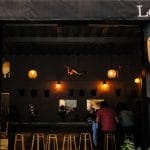 July 10, 2019 Los Loosers
July 10, 2019 Los Loosers
It wasn’t very long ago that finding a vegan restaurant in Mexico City was like finding […] Posted in Mexico City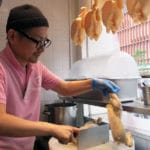 August 1, 2017 Fowl Play
August 1, 2017 Fowl Play
One of the things we love about Japanese food is that it celebrates specialists. A good […] Posted in Tokyo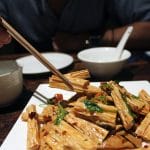 December 5, 2012 Ji Xiang Cao – Lucky Zen
December 5, 2012 Ji Xiang Cao – Lucky Zen
From a country that maintains a “national strategic pork reserve” – vast bunkers of […] Posted in Shanghai
Published on June 01, 2018
Related stories
July 10, 2019
Mexico City | By Susannah Rigg
Mexico CityIt wasn’t very long ago that finding a vegan restaurant in Mexico City was like finding a friend on the city’s overcrowded metro during rush hour (read: impossible). In fact, until this decade there were no exclusively vegan eateries in Mexico’s bustling capital. This is not to suggest that vegan options weren’t available, but exploring…
August 1, 2017
TokyoOne of the things we love about Japanese food is that it celebrates specialists. A good sushi chef makes only sushi, and only after years of study to learn the art of making the perfect rice. Likewise, only a master of the dynamics of hot oil can craft perfect tempura. So it’s no surprise that…
December 5, 2012
ShanghaiFrom a country that maintains a “national strategic pork reserve” – vast bunkers of frozen meat that can be released when the price of the commodity gets too high – one might not expect to find an impressive number of traditional vegetarian restaurants, but you’d be surprised. While exact numbers are hard to pin down…







































